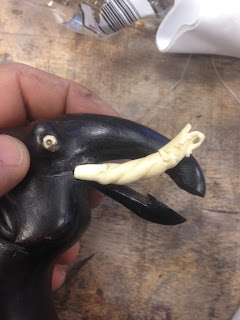During Woodworking in America this pass September, Dyami Plotke from the Modern Woodworkers Association asked me if I could do one thing differently to the business what would it be? My response was I would buy a lot fewer hand tools and smaller power equipment. Since returning home from my travels I have been on a mission to reduce the load. Over the years I fell into the trap of collecting, all too common in the woodworking community these days.
Which brings me to the commonly asked question, what do I recommend for hand tools? Well before I get into my preferred hand tool list, I must inform you that I am not a hand tool only woodworker. I enjoy my machines but they are very basic. For power tools I have a 12inch Powermatic planer, 8 inch Powermatic jointer with quick movable guard, Powermatic 66 table saw, 14 inch Delta Milwaukee bandsaw, 20 inch Delta Milwaukee variable speed scroll saw, and 3 Delta Milwaukee drill presses. From the 3 drill presses 2 of them are bench top versions and the other is a 17 1/2 floor model. Between the 2 bench top drill presses the Homecraft model is set as a mortiser. I do own other equipment but they are rarely used and I will be selling them at some point.
With this basic set of machinery mentioned above my essential hand tool list can be seen below.
Tool list:
12 inch Starrett combination square
Stanley 12 foot tape measure
Chris Vesper bevel square
Surgical handle with blade. I am using this set up as my marking knife.
Awl
Hammer
Dovetail saw
Tenon saw
Coarse rip saw
Crosscut saw
#4 Smoother Lie Nielsen
#5 Fore/jack plane
#7 Edge/jointer plane
#102 Lie-Nielsen block plane.
#60 1/2 Lie-Nielsen block plane
At one time block planes were for carpenters, but this isn't true anymore since Lie-Nielsen perfected the tool.
Shoulder plane. Either Clifton 3110 or Lie-Nielsen medium size version.
Set of chisels 1/4, 3/8, 1/2, 3/4, 1, 1 1/4.
Mallet
Mortise Chisel 1/4, 5/16, 3/8. Buy these when you need them.
Router plane #71. I own the Stanley version, but boy do I love the Lie-Nielsen version.
Small router plane #271. Purchase all the blades that are available.
Cutting gauge with knife.
Knew Concept fret saw. Hands down the best around. All others can't compare.
Bit brace.
Drill bits 1/16-1/2 by 1/32nds or 1/64ths.
Card scraper.
Bastard file
Phil Lowe burnisher
Stanley #80 cabinet scraper
Sharpening stones. These days Shapton ceramic stones are the best and very reasonable. The grits I recommend is 1000, 5000, and 8000.
Optionals:
Nicholson #49 and #50 rasps. I recommend the ones made in USA.
Half round Grobet #0000 file
Lie-Nielson #62 low angle jack.
Now I am not saying to go out and buy all these tools, but the selection will allow you to make just about anything. I hope this helps.
Cheers,
FR




































